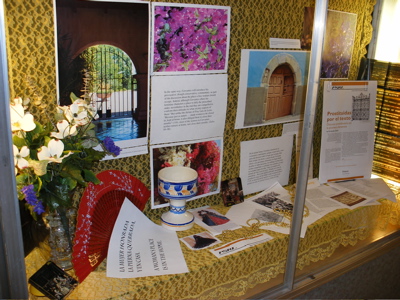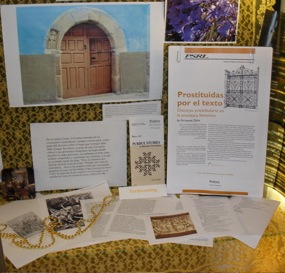Prostituidas por el texto: Discurso prostibulario en la picaresca femenina
Enriqueta Zafra
Prostituidas por el texto, by Enriqueta Zafra, looks at the role of prostitution in female picaresque novels and also in Don Quijote. While most of the authors of the works discussed are male, Zayas is included as a female author of these texts. Also included are etiquette manuals that offer rules ranging from how to be the perfect wife and daughter to advice on using make-up. Zafra also considers legal measures and moral treatises that define the boundaries of sin. Her analysis discusses the “lesser evil” that the presence of prostitutes represents for society as well as the concern for the “public good” that led to its legal eradication in 1623.
Zafra’s research demonstrates that the discourse on early modern prostitution present in literary and extra-literary sources informs us of more than the sexual practices allowed to prostitutes and therefore is part of a larger discourse on the regulation of women’s behavior. She points out that moralists, preachers, and legislators as well as writers participated in this on-going discourse on prostitution, women, and sex. She also sees an interplay between the fictional discourse of lust, disease, and misogyny and that of legal and moral control whose main purpose was to restrict the actions of women who were considered to be out of control.
This is the first full-length study that investigates the discourse on prostitution in both literary and extra-literary sources. At the same time, the work fills a necessary gap in Spanish gender and literary studies, since it covers the trajectory of the pícara-prostitute from the early sixteenth to seventeenth centuries.
“This is a very strong and solidly researched book on the reasons why the genre of the female picaresque speaks to the anxieties over prostitution in early modern Spain. It successfully combines an understanding of the history of prostitution,... the writings of moralists on the topic, and the representation of the pícara as the literary embodiment of the prostitute.”—Anne J. Cruz, University of Miami
"... her investigation is thorough, and draws on a great deal of religious, recreational, and advice literature of early modern Spain ... Written for a scholarly audience, this work will be a useful text in upper level undergraduate and graduate Spanish courses. It clearly adds much to current scholarship on Spain's Golden Age, the picaresque genre, and early modern women's history." —Edward Behrend-Martínez, Renaissance Quarterly 63.1 (2010: 289-90.
"... gracias a su perspicacia y su sagacidad, Enriqueta Zafra produce este vasto análisis en un trabajo erudito y absorbente que aúna armoniosamente, textos ficticios, tratados morales y documentos legales. ... representa un sólido avance con respecto a la investigación del discurso prostibulario dentro de la literatura picaresca femenina." —Louis Imperiale, Cervantes 30.1 (2010): 204-09.
"One of the strengths of this study stems from Zafra's understanding of the connection between literature and society. ... With a clear understanding of her subject matter, Zafra presents an exciting study of the female picaresque that will find its due place among other major studies on picaresque literature." Carolyn A. Nadeau, Bulletin of Hispanic Studies 87 (2010): 625-26.
Enriqueta Zafra, Trent University, Canada, is originally from Córdoba, Spain. She has a forthcoming article, “Teaching the Role of Prostitution in the Female Picaresque,” in Approaches to Teaching "Lazarillo de Tormes" and the Picaresque Tradition as part of the Modern Language Association collection on Approaches to Teaching, and is presently working on a modern edition of the picaresque novel Vida y costumbres de la madre Andrea.
ISBN-13 978-1-55753-527-6
2008. Vol. 46. ca. x, 242+ pp. Paper $43.95 IN SPANISH

Display case in Stanley Coulter Hall, January 5-16, 2009. Picture of private courtyard on left and clipart of gate on poster © 2008 Jupinterimages.com
Display case in Stanley Coulter Hall, January 5 to January 16, 2009.
Blue building: La casa de las Muñecas. The black iron plaque surrounding the large keyhole in the door depicts a pair of women carousing. This, together with the distinctive blue of the house, identifies it as a 16th-century brothel, from a time when prostitution was legal in Spain. This one, in Garganta la Olla, in Extremadura, was a favorite of the soldiers of King Charles I (Holy Roman Emperor Carlos Quinto). It can still be seen today. Photo of house © Jose Antonio, teljas@gmail.com, http://eljas.100webcustomers.com/Serrana.htm. Used with permission.
Last updated July 1, 2015
For information about this book, contact the production editor at clawsons@purdue.edu
